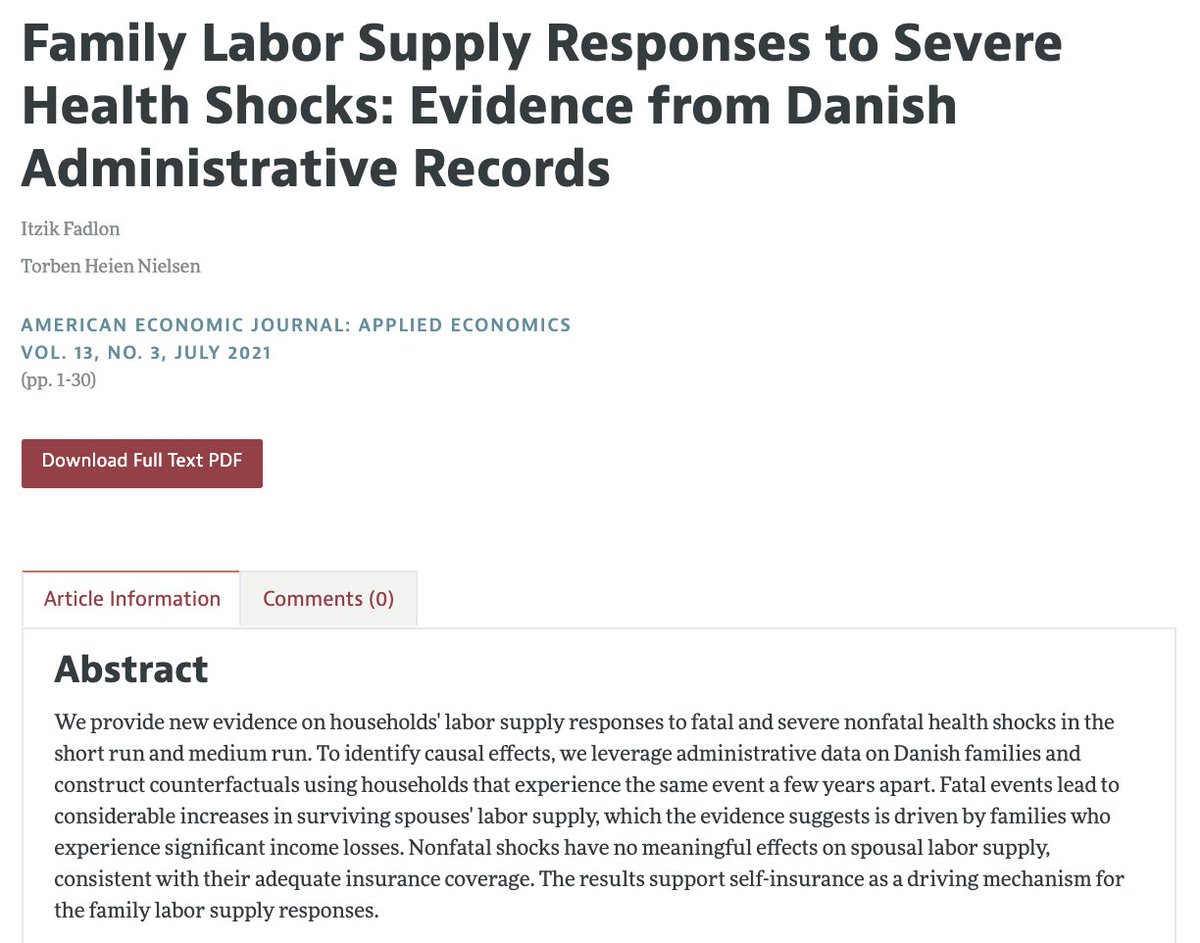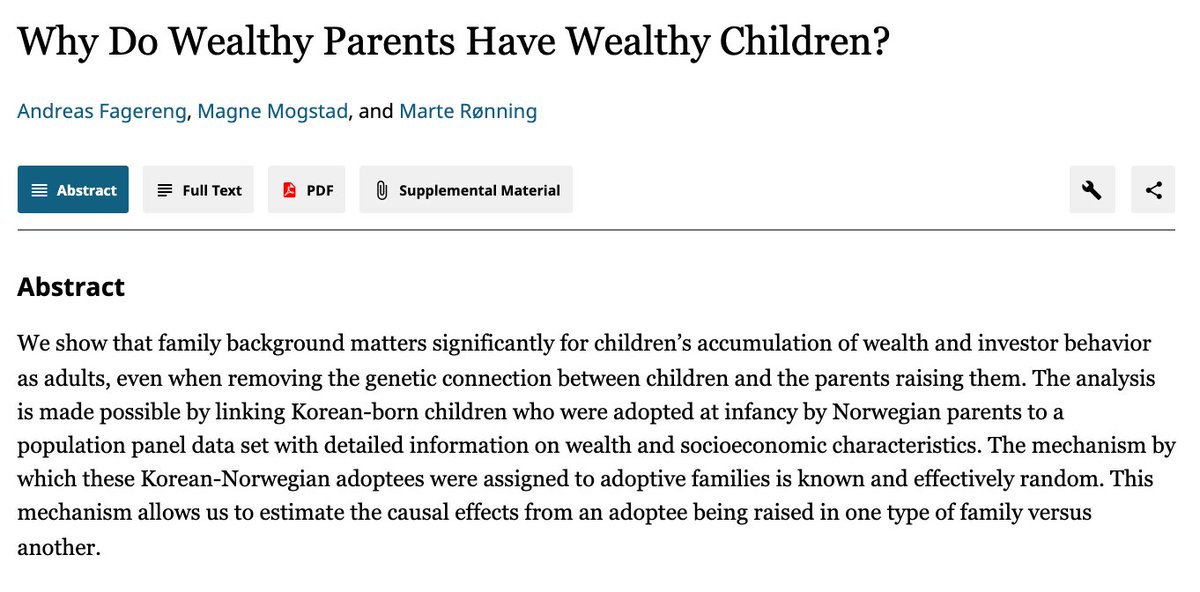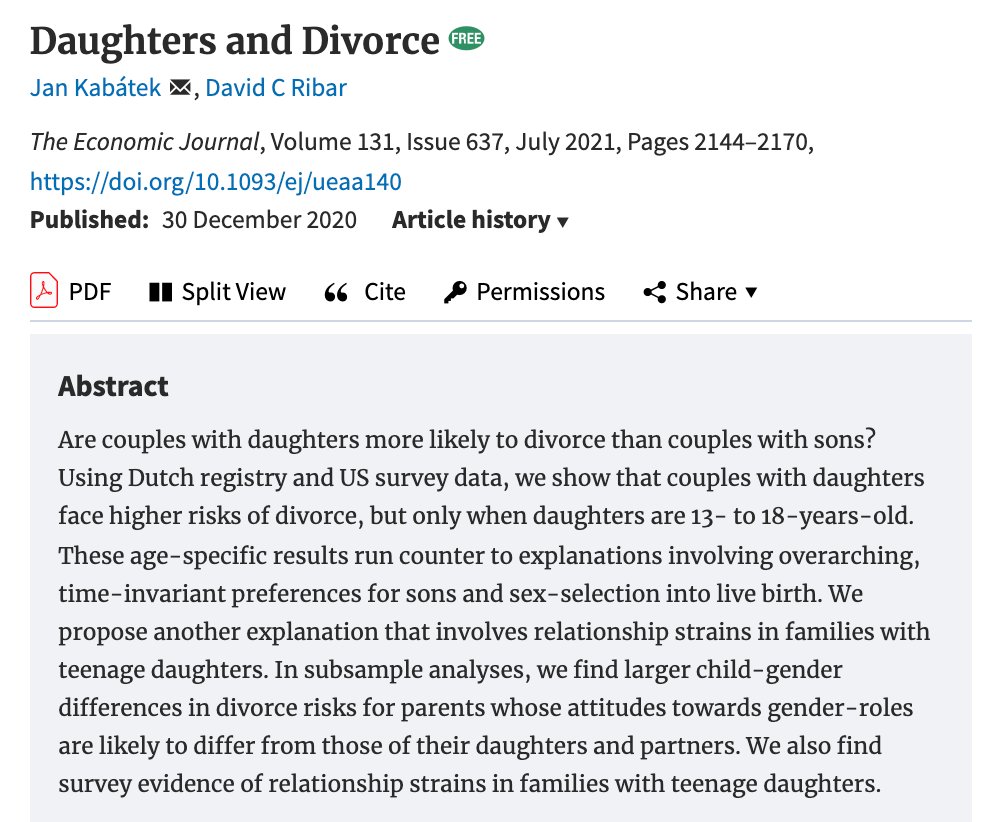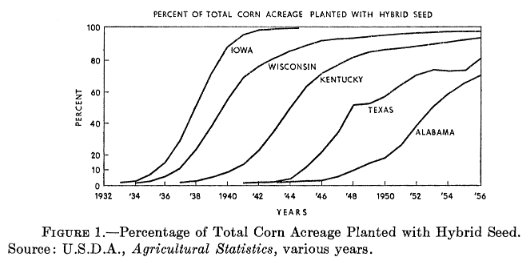
My annual tradition continues -- my 10 favorite economics papers published in 2021, ordered alphabetically
[Meant to do this yesterday, but I had a paper rejected on New Year's Day -- Happy New Year! -- so I decided to deal with that instead]
[Meant to do this yesterday, but I had a paper rejected on New Year's Day -- Happy New Year! -- so I decided to deal with that instead]
https://twitter.com/ProfNoto/status/1344672893167259648
1) Randomized experiment showing that reducing the complexity and uncertainty in the application & financial aid process increased enrollment of high-achieving, low-income students at @UMich aeaweb.org/articles?id=10… 

Interestingly, the increased enrollment does not primarily come at the expense of other "highly competitive" universities, but instead the intervention "diverted" many of the low-income students away from 2-yr colleges & less-selective four-year colleges towards @UMich instead
Was this good for the students? Too early to say for sure, but there is no evidence of any "mismatch effects" so far, and eventually the authors will be able to study college major choices, graduation rates, & earnings
By coincidence, the first paper alphabetically is my favorite of the year
Pretty sure paper would be on @R_Thaler's "favorite papers" list, and both @Susan_Athey & Raj Chetty listed paper as their "most important paper" back in 2018 -- quite a fan club! qz.com/1508659/twelve…
Pretty sure paper would be on @R_Thaler's "favorite papers" list, and both @Susan_Athey & Raj Chetty listed paper as their "most important paper" back in 2018 -- quite a fan club! qz.com/1508659/twelve…
2) This paper studies the economic consequences of severe health shocks in Denmark, focusing on the role of social insurance & labor supply responses in replacing the "lost income" caused by health shocks aeaweb.org/articles?id=10… 

There are some interesting similarities & differences w/ my own work in the US; roughly speaking, in both Denmark & the US, non-fatal health shocks lead to large & persistent reductions in earnings (~equal to average earnings losses from job displacements after a plant closure)
But in Denmark, most of the income is replaced by private & social insurance (e.g., transfers, disability insurance); while in the US, most of the income is *not* replaced (except for people who are at -- or close -- to the Social Security retirement age) aeaweb.org/articles?id=10…
The bottom line is that workers are less insured against the earnings losses from health shocks in the US compared to Denmark
3) This paper uses Korean-Norwegian adoptees who were effectively randomly assigned to families of different wealth levels to estimate the causal effect of parental wealth on the wealth of the adopted children journals.uchicago.edu/doi/10.1086/71… 

Adoptees raised by wealthy parents are more likely to be wealthy themselves -- the true causal effect is clearly >0
But the effect of parental wealth is much smaller than the intergenerational correlation in wealth b/w parents & children
But the effect of parental wealth is much smaller than the intergenerational correlation in wealth b/w parents & children
4) This paper identifies & estimates the causal effect of "place" on elderly mortality using people who move between cities later in life aeaweb.org/articles?id=10… 

There have been many nice "movers" papers in recent years, and these papers typically compare outcomes for people before & after they move
But how do you implement a "movers design" when studying an outcome like mortality? You only die once, after all
But how do you implement a "movers design" when studying an outcome like mortality? You only die once, after all
This paper develops a creative solution, and I expect it will end up being influential because it expands the scope of possible "movers" studies to now include outcomes like mortality that are not observed repeatedly in individual-level panel data
5) [More Denmark!] This paper studies a large parental leave reform and finds that the parental-leave-induced reductions in nurses led to more readmissions for heart attack patients & higher mortality in nursing homes [Talk about unintended consequences!] doi.org/10.1093/restud… 

The results imply nurses are probably paid well below their marginal product & nurse staffing levels are set inefficiently low
Results also show it's hard for hospitals to adjust to nurse labor supply shocks in the short-run, which ultimately leads to poor outcomes for patients
Results also show it's hard for hospitals to adjust to nurse labor supply shocks in the short-run, which ultimately leads to poor outcomes for patients
6) A simple letter from the IRS nudged millions of Americans to sign up for health insurance and this saved hundreds of lives
This paper represents some of the best evidence on the effect of health insurance coverage on mortality risk doi.org/10.1093/qje/qj…
This paper represents some of the best evidence on the effect of health insurance coverage on mortality risk doi.org/10.1093/qje/qj…

Interestingly, the causal effect is smaller than a "naive" analysis that does not account for selection into insurance, which echoes the findings in 3) & 4) above
For me, these examples show the large benefit of natural experiments & RCTs in applied microeconomics
Basically, I still agree w/ everything @metrics52 wrote back in 2007 defending @Freakonomics marginalrevolution.com/marginalrevolu…
Basically, I still agree w/ everything @metrics52 wrote back in 2007 defending @Freakonomics marginalrevolution.com/marginalrevolu…
7) This paper builds an extremely convincing case that in order to understand the economics of the individual market for life insurance, you absolutely need behavioral economics
Longer thread about the paper here:
aeaweb.org/articles?id=10…
Longer thread about the paper here:
https://twitter.com/ProfNoto/status/1388150811428065285
aeaweb.org/articles?id=10…

8) From consumers "lapsing" on their life insurance policies to SNAP recipients failing to re-certify
Many households fail to re-certify for SNAP when they can't reschedule their missed interviews, & quickly re-enroll once their benefits have "lapsed" aeaweb.org/articles?id=10…
Many households fail to re-certify for SNAP when they can't reschedule their missed interviews, & quickly re-enroll once their benefits have "lapsed" aeaweb.org/articles?id=10…

9) Fascinating paper showing that the higher divorce rates of families with daughters is largely explained by the higher divorce rates specifically during the years when the daughters are teenagers academic.oup.com/ej/article/131… 

10) This paper uses a 2011 reform in NC that reduced prison punishments for "technical rules violations" (e.g., not paying fees & fines) to study how the probation system drives racial disparities in incarceration doi.org/10.1093/qje/qj… 

The one-year re-arrest rates for both Black & White individuals released from prison were surprisingly high to me (~30-55%), which I interpret as evidence that US prisons do a poor job on rehabilitation
That's the list -- Happy New Year!
</thread>
[I'll do another list this summer when I step down as co-editor at AEJ-Policy. I'll do my favorite 10 papers that I handled during my 6-year tenure; I think by then I will have handled ~800 papers]
</thread>
[I'll do another list this summer when I step down as co-editor at AEJ-Policy. I'll do my favorite 10 papers that I handled during my 6-year tenure; I think by then I will have handled ~800 papers]
• • •
Missing some Tweet in this thread? You can try to
force a refresh






